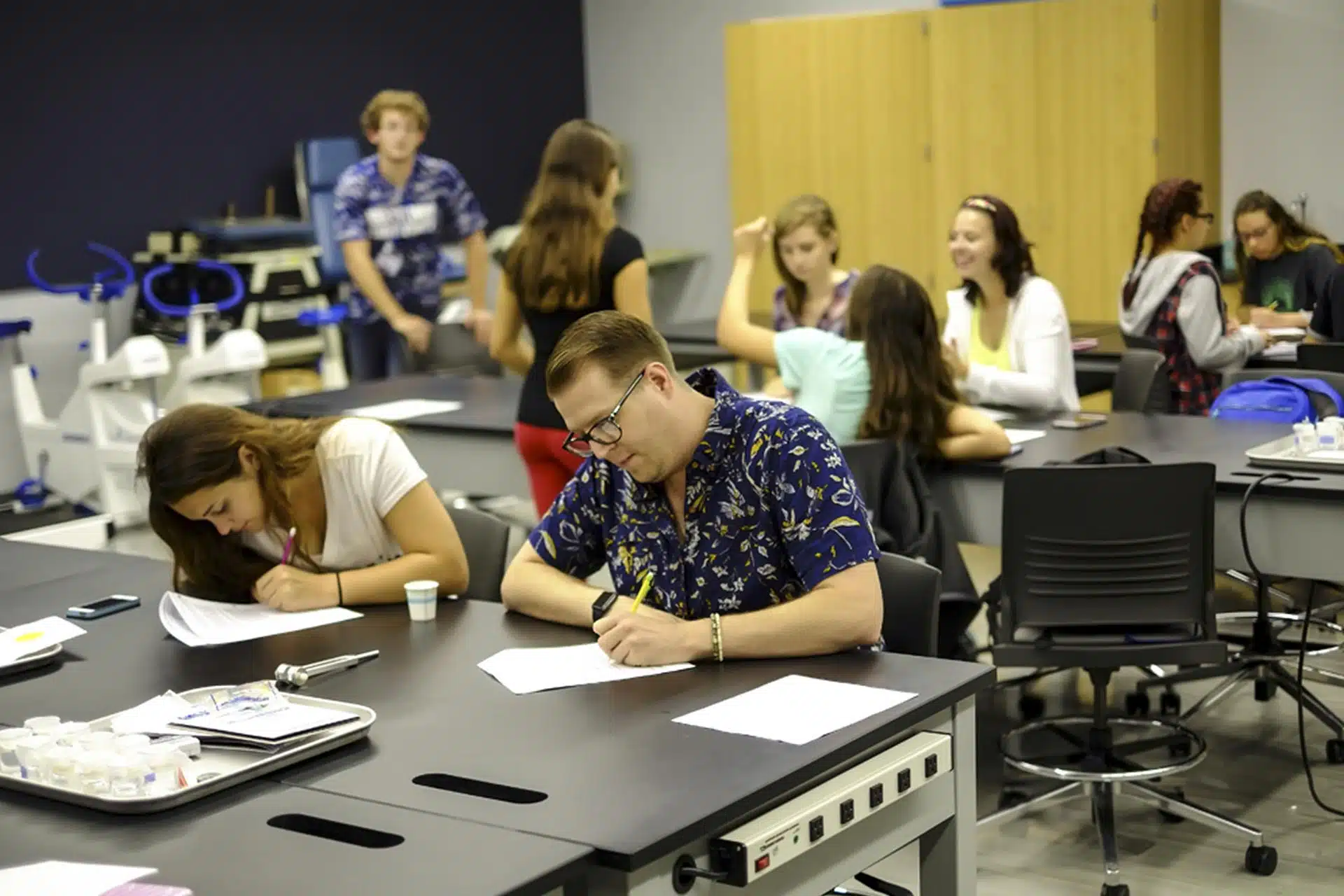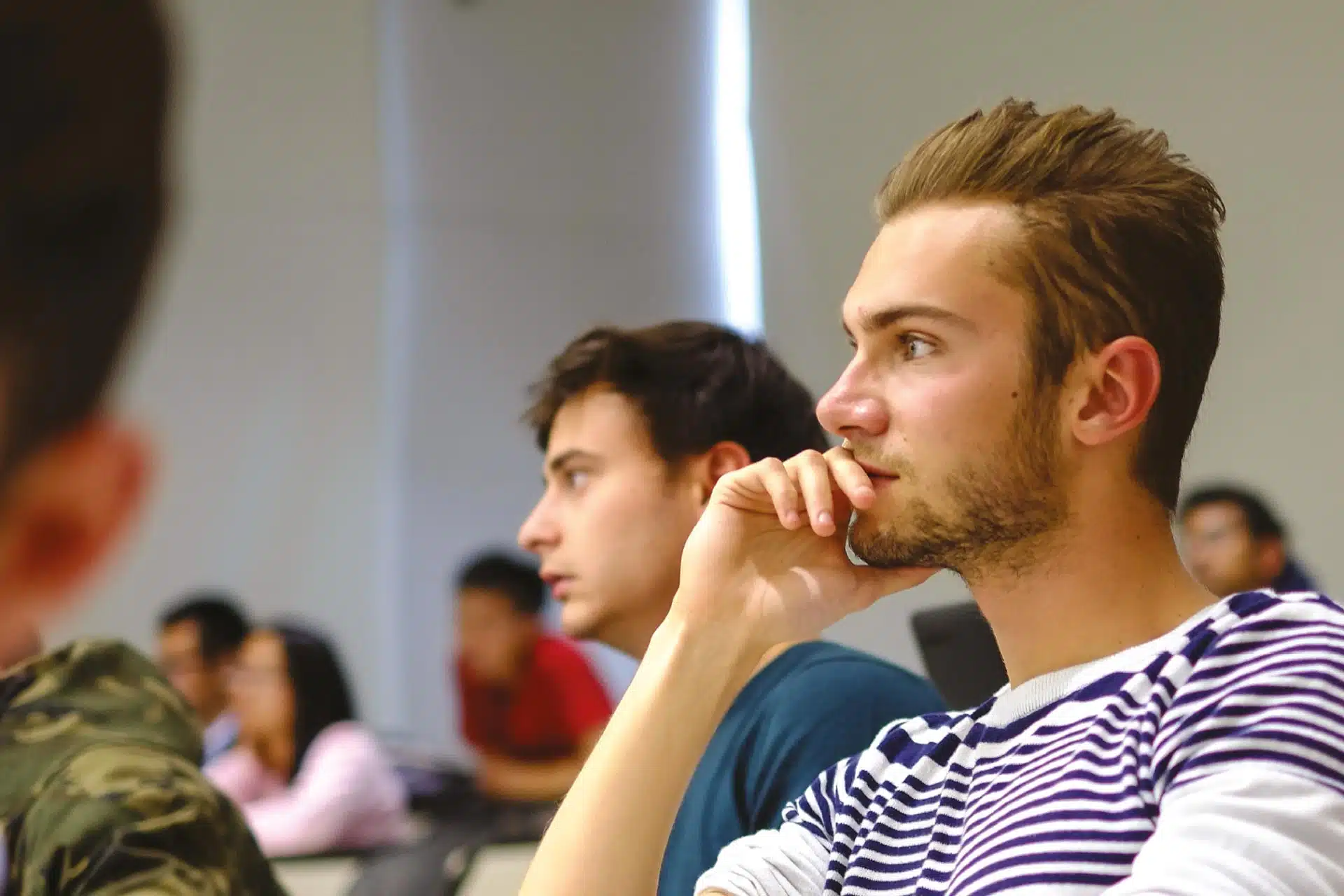In the American university system, it’s all about you. You decide your course trajectory: major, minor, electives, even general education requirements. There are as many class combinations as there are students. Studying at a Go Campus partner institution allows you to cultivate your own programme. Outside of the classroom the campus is buzzing as students have endless opportunities to continue learning through club membership, playing sports or Greek Life.
Although Go Campus universities span across the country, the standard of quality remains the same. Universities are oriented toward the success of their students and continuously provide support and guidance. Throughout your studies, the university will offer support through avenues such as school counsellors, professor office hours and student success centres. The relationship between the student and professor also tends to be more relaxed and less formal, similar to what you may already be familiar with at home. Whichever Go Campus university you choose, this school will seek to accompany you and assist you in creating and succeeding in your own personalised career path.
Majors
Choosing to study with Go Campus not only guarantees meaningful scholarships but also ample educational opportunities. Our partner universities are diverse and offer hundreds of majors that are certain to spark your interest. Our universities offer degree programmes in biology, computer science, theatre, child development, business, music, political science, international relations, journalism — the list goes on. For a better idea of what Major you could study, click on the link for more.
You will spend the majority of your time taking classes related to your major, but the American education system champions the whole of the individual (the development of the whole individual). This means you will take a variety of courses, including general education, and may participate in various clubs and sports. If you wish to change your major, it’s less of a hassle to switch majors, given your general education studies. Thanks to the emphasis on general education studies, if you want to change your major it’s no hassle!
Your diploma will state your major, whether it’s a Bachelor of Science in biology or a Bachelor of Arts in theatre.

General education
Virtually every major in the United States requires general education courses. These refer to basic classes, such as English, History, Maths or Science. Whether you’re a history or journalism major, computer science or art major, universities often require between 42 and 60 credits of general education. Even if you haven’t studied Maths since Middle School or you don’t have a diploma specialised in History, don’t worry! These general education classes ensure that everyone is up to speed on key structures and have a strong base-knowledge to develop upon. These general education courses also allow you to later change your major if you so wish.
The American education system encourages students to be well-rounded in a myriad of subjects, not simply their majors. Thanks to general education, everyone will have a similar base knowledge, which allows them to be adaptable and open-minded.
For example, you may declare that you are a Journalism major. The first two years of your degree will be spent mainly in general education. This means that your timetable may include classes on economics, English literature, history, maths and foreign language. Additionally, you’ll also take a handful of introductory journalism courses.
In this same example, once you have completed your general studies requirements, you can truly dive into your subject material for the final two years. Your timetable may include publication design, magazine writing, photography, broadcast editing and newspaper staff. The university will provide you with a list of all the options you have available (as well as required courses) allowing you to truly cater to your degree to your interests.
In short, the first two years are dedicated to basic studies and improving your overall general knowledge, including and several classes related to your major. And the final two years are devoted to courses specific to your major.

Can’t decide?
Spending the first two years in general studies allows you to wade into your major slowly and it also makes it easier to change your major, if you happen to change your mind. As general studies are required for every major, you don’t need to start back at zero if you switch your major meaning you don’t lose a year of studies.
Let’s say you begin as a Psychology major. And after one year of university studies, you decide that you’d rather study statistics. In other countries such as the United Kingdom, you may have to completely start over. However, in the United States, which values general education studies, it’s relatively simple to change your major during the first two years. Oftentimes, the general education credits count toward just about any major.
Can’t decide on just one field of study? No worries. American universities offer both majors and minors. You’ll spend the majority of your studies in your major but adding an optional minor will allow you to have a specialty and to personalise your educational experience.

Minors
One major advantage to American education is its flexibility, including the ability to add a minor. In essence, minors are optional specialties to add to your degree. Requirements vary by universities, but oftentimes, you are required to have taken 15 credit hours in one subject area in order to earn a minor.
Let’s say that you know you want to major in Business, but you also love photography. You can choose a business major and add a photography minor. This means that outside of general education, you’ll mainly take business classes, but you’ll also have a concentration in photography classes.
Your major and minor don’t need to be related whatsoever. Minors aren’t required, but they allow you to expand your breadth of knowledge and to explore your many interests. When you graduate with your Bachelor’s Degree, it will show that you’re well-trained in business but that you also have a background in photography. The minor system in American universities allows you to finish your students versatile in multiple domains. This Major/Minor option could also open up fields of work you hadn’t previously considered because of your in-depth understanding of more than one subject area.
American universities operate on the Grade Point Average, or GPA, system. It is a 4-point scale with 4.0 being the highest GPA possible. In your classes, you will be given a letter grade for your work: A being the highest, B being the second highest, etc.
| GPA | Percentage Grade | Letter Grade | UK Degree Classidications |
|---|---|---|---|
| 4 | 100-90% | A | 70+% (First-class honours) |
| 3.3 | 89-80% | B | 60-69% (Upper Second-class honours / 2:1) |
| 2.7 | 79-70% | C | 50-59% (Lower Second-class honours / 2:2) |
| 2.3 | 69-60% | D | 40-49% (Third-class honours) |
| 1 | 50-0% | F | 35-39% (Ordinary Degree no honours) |
If you earn an A in a class, this equates to a 4.0. Earning a B equates to a 3.0, a C being 2.0 and a D being 1.0. At the end of each semester, your grades will be finalised, and these letter grades will translate into your GPA. It is an average of your letter grades from each class converted into a GPA. For example, if you earn Bs in all your classes, you will have a 3.0 GPA. Here’s an example below:
| Class | Percentage | Grade | GPA |
|---|---|---|---|
| Intro to Physics (3 credits) | 89% | B+ | 3.7 |
| English Literature (3 credits | 95% | A | 4.0 |
| Art History (3 credits) | 71% | C- | 2.7 |
| French II (3 credits) | 86% | B | 3.3 |
| Microbiology (3 credits) | 93% | A | 4.0 |
| Average GPA : | 3.54 |
Earning a good GPA is important . Employers care less about the fact that you attended a university and more about how you spent your time there. Some scholarships, honours and awards are reserved for students who have developed a strong GPA. Universities also have GPA requirements in order to pass classes.
Important: Most of our partner schools require students to average at a 2.0/2.5 GPA to be accepted on to the programme.

Typical week
In the typical American university, the average student spends roughly 15 hours in lectures and/or seminars each week. In addition to this class timetable, students report spending 17 hours studying outside of class per week, according to USA Today.
Timetables vary by majors and minors, class availability and student choices. On top of your studies, you will have the opportunity to participate in extracurricular activities, such as sports teams and clubs, such as art, music, theatre, film, etc.
Here’s an example of a student’s timetable of 15 credit hours in an American university: